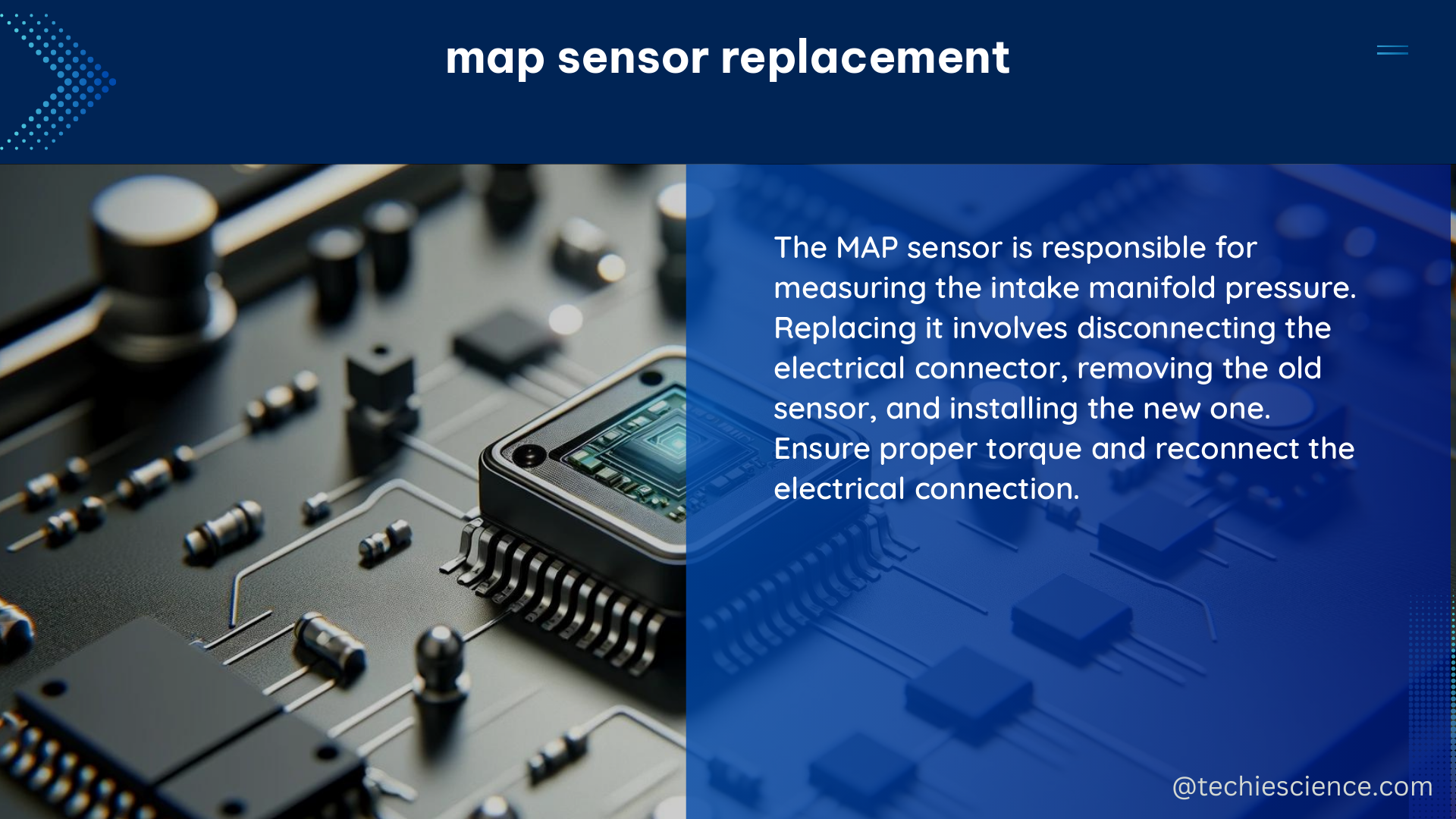A map sensor, also known as a manifold absolute pressure (MAP) sensor, is a critical component in modern vehicle engine management systems. It measures the pressure inside the intake manifold, which helps the engine control unit (ECU) determine the engine load and adjust the fuel injection and ignition timing accordingly. Over time, a map sensor can fail or become faulty, causing various driveability issues. This guide will provide a detailed overview of the map sensor replacement process, focusing on the technical specifications, tools required, and step-by-step instructions.
Technical Specifications of Map Sensor Replacement
Before embarking on the replacement process, it is essential to understand the technical specifications of the map sensor. Here are some key specifications to consider:
Sensor Type
There are two main types of map sensors: analog and digital. Analog sensors use a variable resistor or a voltage divider to measure the manifold pressure, while digital sensors use a piezoelectric crystal to generate a digital signal. Analog sensors typically have a resistance range of 0-100 kΩ, while digital sensors produce a voltage signal ranging from 0-5V or a digital pulse-width modulated (PWM) signal.
Pressure Range
Map sensors are designed to measure a specific range of pressures, typically from vacuum (0 kPa) to a maximum pressure, depending on the application. For instance, a typical gasoline engine map sensor may have a range of 0-100 kPa, while a diesel engine sensor may have a range of 0-500 kPa. The pressure range is an important factor to consider when selecting a replacement sensor, as it must match the specifications of the original sensor.
Temperature Range
Map sensors are also designed to operate within a specific temperature range, typically from -40°C to +125°C. This ensures the sensor can function accurately in a wide range of environmental conditions, from extreme cold to high engine temperatures.
Signal Type
Map sensors can produce either an analog voltage or current signal, or a digital signal, such as PWM or SENT (Single Edge Nibble Transmission). The signal type is crucial, as it must match the input requirements of the vehicle’s ECU.
Tools Required for Map Sensor Replacement

To replace a map sensor, you will need the following tools:
| Tool | Purpose |
|---|---|
| 10mm Socket Wrench | To remove the screw holding the map sensor to the engine |
| Flathead Screwdriver | To tighten the screw clamps around the intake piping |
| MAF/MAP Sensor Cleaner | To clean the inside of the sensor, removing any dirt or contamination |
| Gloves | To protect your hands from the non-polar organic volatile substances in the cleaner |
| Vacuum Gauge | To check for vacuum leaks in the intake system |
DIY Map Sensor Replacement: Step-by-Step Instructions
Here are the steps to replace a faulty map sensor:
-
Inspect the intake system for vacuum leaks: Use a flathead screwdriver to tighten the screw clamps around the intake piping. Visually inspect the piping for cracks, breaks, deformations, and holes. If any leaks are found, they should be repaired before proceeding with the map sensor replacement.
-
Locate the map sensor: The map sensor is typically located on the far right corner of the top portion of the engine block. If you have trouble finding it, refer to the vehicle’s service manual or perform an online search for images of the sensor’s location.
-
Remove the screw holding the map sensor to the engine: Use a 10mm socket wrench to remove the screw holding the sensor to the engine. Be careful not to lose the screw or any washers.
-
Clean the sensor: Spray the inside of the sensor with MAF/MAP sensor cleaner 8-10 times, making sure to flip the sensor upside down to allow for the fluid to drain. Let the sensor sit for 15-20 minutes under room temperature conditions to allow the cleaning solvent to evaporate.
-
Install the new sensor: Secure the new sensor with its screw and plug the sensor cable into the sensor. It does not matter if you plug it in before you screw it down.
-
Reset the ECU: Before turning the car on, reset the ECU to ensure it recognizes the new sensor. This can be done by disconnecting the battery for 30 seconds or using a diagnostic tool to clear any trouble codes.
Remember to always refer to the vehicle’s service manual for specific instructions and torque specifications, as they may vary depending on the make, model, and year of the vehicle.
Reference:
– How to Fix the P0106 MAP Sensor “Service Engine Soon” Fault
– Ross-Tech Forums
– MAP Sensor Replacement – Symptoms, Causes, and Fixes

The lambdageeks.com Core SME Team is a group of experienced subject matter experts from diverse scientific and technical fields including Physics, Chemistry, Technology,Electronics & Electrical Engineering, Automotive, Mechanical Engineering. Our team collaborates to create high-quality, well-researched articles on a wide range of science and technology topics for the lambdageeks.com website.
All Our Senior SME are having more than 7 Years of experience in the respective fields . They are either Working Industry Professionals or assocaited With different Universities. Refer Our Authors Page to get to know About our Core SMEs.